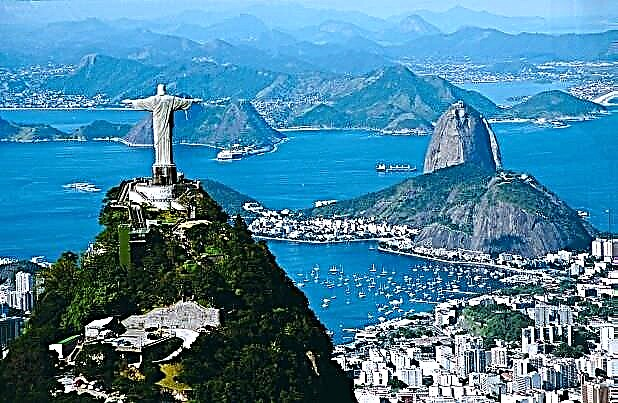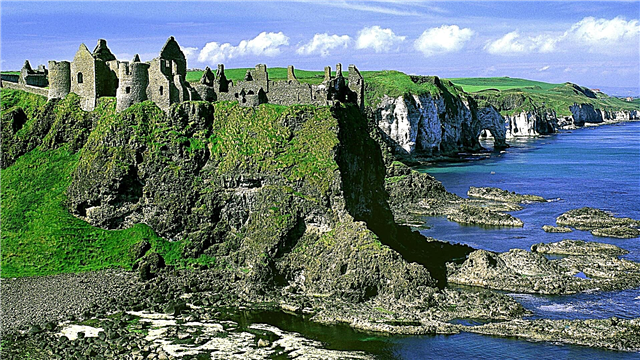The Leaning Tower of Pisa is known for its unique structure to almost every adult, because they talk about it at school. It is one of the most visited attractions in Italy. For many years, tourists were not allowed inside the leaning building, but since the "fall" was prevented, today those who wish can climb to the bell tower and look at the opening view of the Park of Miracles.
Leaning Tower of Pisa in Detail
For those who don't know where the leaning tower is, it is worth going to the city of Pisa. Attraction coordinates: 43 ° 43'22 ″ s. sh. 10 ° 23'47 ″ in. e. The bell tower is part of the Pisa Cathedral, located in the Square of Miracles. His ensemble includes:
- Cathedral of Santa Maria;
- tilted campanile;
- baptistery;
- cemetery of Santa Campo.

The height in meters differs from different sides due to the slope: the larger one is 56.7 m, the smaller one is 55.86 m. The diameter of the foundation is 15.5 meters. The belfry weighs more than 14 thousand tons. The angle of inclination in degrees today reaches 3 ° 54 ′.
Construction history and its salvation
The history of the creation of the bell tower stretched for hundreds of years, as it was necessary to look for solutions so that the structure would not lose stability. The project of the future bell tower was created by Bozanno Pisano, who began construction in 1172. After the construction of the first floor and two tiers of columns for the next floors, the structure began to fall to one side. As it turned out, the soil under the base on the southeast side was clayey, which is why it was eroded under the influence of groundwater. Work on the construction of the tower was stopped, and the master left the project unfinished.
Later, the soil at the foundation was slightly strengthened, and in 1198 the building was even opened to visitors. Work on the bell tower was resumed in 1233; after 30 years, marble was brought in for the facade. By the end of the 13th century, six floors of the Leaning Tower of Pisa had already been built, which is why the curved building began to stand out more against the background of other buildings, and the shift was already 90 cm from the axis. Fully built in the fiftieth 14th century, then the eighth floor with a belfry appeared. Despite how many years the tower was under construction, the official year of construction is not known precisely. Some argue that this is 1350, others refer to 1372.
Many people have asked why the tower is tilted, and even claimed that it was originally intended. But the facts prove the opposite, because during the design of the structure, soil indicators were not taken into account. The foundation was laid too high, at a depth of 3 meters, which in soft soil is fraught with destruction. The bell tower does not fall down only from the fact that to this day work is underway to strengthen the foundation.
In the early 19th century, residents of the city wondered when the great landmark would fall after part of the land at the base was simply removed for aesthetic reasons. The structure began to roll many times stronger, and for many it remained a mystery how they managed to preserve it.
Active work to strengthen the foundation began in the early 20th century and continues to this day. First, the base was strengthened, making it waterproof with liquid cement, and later lead weights were attached to the concrete beams from the north side, which were supposed to stabilize the structure. The main work was carried out with the soil: it was literally washed out bit by bit, and a screw auger was placed under the structure. As a result, the Leaning Tower of Pisa became what it looks like today, its angle of inclination has decreased by almost one and a half degrees.
Facade and interior design of the bell tower
One has only to look at what the tower looks like from the outside, and you immediately want to refer it to the 7 wonders of the world. It was made of marble, but the openwork arches in the Gothic style make the eight-story building so airy that no photograph can convey its true beauty. The first floor of the Leaning Tower of Pisa is deaf, it is decorated with arches with 15 semi-columns. Above the door is a 15th-century sculpture of Mary and Child.
Six identical floors are enchanting with their architecture. Each floor consists of 30 columns that turn into openwork arches, empty in appearance, which makes the overall impression more light. The beautiful belfry is decorated with drawings of mystical animals. For those who are interested in how many bells are installed inside, it is worth mentioning that there are seven of them, and the largest one is called L'Assunta (Assumption).
The campanile is no less interesting from the inside than from the outside. Its walls are decorated with pictures on the bas-reliefs. Climbing the floors, you can visit the tower's galleries, each of which hides its own secrets. The scheme of the staircase leading to the bell tower is spiral; 294 steps lead to the top, the size of which decreases with each floor. The view inside is just as impressive, it feels like every detail has been worked hard.
Leaning Tower of Pisa
There is an interesting story explaining the reason why the tower tilted. According to her, the building was created by the master Pisano, exquisite and graceful, it towered straight, and nothing could spoil the appearance. Upon completion of the work, the architect turned to the clergy for payment, but they refused him. The master was upset, turned around and finally threw in the direction of the tower: "Follow me!" As soon as he said this, his creation, as if obeying, bent down after the creator.
Another legend is associated with the works of Galileo Galilei. Some sources mention that the great scientist dropped bodies of different masses from the bell tower in order to prove to the teachers from the University of Pisa the law of universal attraction.
We recommend reading about the Syuyumbike Tower.
In addition, Galileo's biography also indicates that his contribution to physics, associated with the oscillations of the pendulum, is also associated with experiments carried out in the Leaning Tower of Pisa. Until now, these data cause controversy in scientific circles, since some argue that this is fiction, others refer to information of a biographical nature.
Amazing about the leaning tower
It is known from history that the design of the campanile is unstable, which is why it leans more and more to the south every year. But, despite this, the famous bell tower was not damaged by earthquakes, which have already happened in Tuscany more than once.
Interesting facts also concern the Hall of Fish, on the wall of which there is a bas-relief of a creature that is a symbol of Christianity. There is no ceiling in this room, and tourists, looking up, can see the sky as if through a huge telescope.
Useful for tourists
Despite the fact that the Eiffel Tower was built in 1889, interest in the Leaning Tower of Pisa continues to this day. Tourists are still wondering why the bell tower was built, in which country it is located, whether it will ever fall, and why it is tilted. Catholics wanted to create an amazing bell tower, which cannot be compared with any other mosque, and they managed to create a real miracle that paints its history in tourists' photos every day.
Bell tower address: Piazza dei Miracoli, Pisa. Getting to the square is not difficult, but it is worth checking the opening hours in advance. They differ not depending on the season, but on the month, so when planning a vacation it is worth looking at the work schedule. Once in the Park of Miracles, you will not need to look for the Leaning Tower of Pisa, as it stands out from the general view due to its inclination.
During the excursion, they will definitely give a brief description of the history of the bell tower, tell how long the belfry was built and what it is known for, but the most important thing is not to miss the chance to go upstairs. Only at the top can you admire the surroundings and feel on yourself how the tower stands and what makes it unique.









